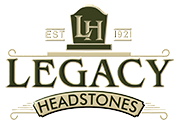Some of us may consider cemeteries the final resting place of loved ones—a place to visit, reminisce, grieve, and remember. While all of these things are true, there is a wealth of surprising information within a cemetery that many may not consider. Cemeteries can provide immense genealogical details and value, helping us map out our family trees.
A cemetery can be a great source of information to trace recent and long-departed ancestors. In the United States, even if a cemetery is closed to the public—the names of the persons buried within it are open to the public. Visiting a cemetery to learn more about your family and ancestors can help you feel more grounded and connected to the past. But what things can you glean about your ancestry from a cemetery?
Name, Birth, and Death
Most gravestones in good condition will have the deceased name and at least the year of birth and death. You also can learn the deceased parents' names. Depending on the cemetery, a searchable online database may allow you to connect parents' names if known. If they do not have any online resources, and the cemetery is open to the public, you can always schedule a visit to view their records.
Relationships
Either names on the gravestone itself or can be deduced by nearby stones with further research. For example, you may find 'mystery' headstones placed together in a family plot, but perhaps it does not list a relationship to the family or other deceased. With subsequent research, you may find unexpected connections, such as first or second marriages.
Children
Life was not always easy, and many of our ancestors did not have access to anything like our healthcare today. Many women gave birth in their homes alone or with a midwife, and certain diseases and sicknesses did not have a cure. Sometimes babies were born and passed between censuses or well before the invention of official birth records. Some cemeteries may have separate infant sections, and older stones tend to be relatively tiny and can be hidden in overgrown foliage—you may find unexpected clues by searching these easily missed headstones, searching in the cemeteries' database, or through their records.
Military Service
You may discover an ancestor you were aware of—but did not know—served in the military. Occasionally, these will have government markers, plaques, or list rank and branch on the headstone itself. Suppose you are unsure or cannot find any mention of rank or branch, but believe one of your ancestors served in the military. In that case, you can also request service records via usa.gov online or research military records from before 1917 from the National Archives.
Maiden Names
While a woman's maiden name may be on her grave marker, it is not always guaranteed. Occasionally her mother's or father's names may also be mentioned or buried nearby. One of the ways you may be able to discover her maiden name is by searching gravestones nearby. A brother or an unmarried sister could reveal her maiden name.
Religious, Fraternal, Organization, and Union Memberships
Some grave markers are plain and straightforward, with names, dates of birth, and death. Others may offer clues in the symbols carved on their gravestone. These symbols often represent religious views, organizations, possibly chosen trade, and even union memberships. Some of the more common symbols that may reveal more information:
- Anchors – Hope or Navy
- Anvil and/or Hammer – Blacksmith
- Beehive – Perhaps a member of the Independent Order of Odd Fellows or the Church of Jesus Christ of Latter-day Saints
- Church – Ministry, either pastor or minister
- Corn or Wheat – Farming
- Anchor or Sextant – Mariner, Sailor
- AAONMS – Ancient Arabic Order or Nobles and the Mystic Shrine (Masonic)
- AASR – Ancient and Accepted Scottish Rite
- BPOE – Benevolent and Protective Order of Elks
- FOE – Fraternal Order of Eagles
- K of C – Knights of Columbus (Catholic)
Tips for Cemetery Research
- Know where your ancestor or ancestors are buried. Ask family, search death certificates, obituaries, cemetery indices and surveys, and online sites.
- Study the location of the cemetery before visiting. There may be some clues to your ancestors by understanding the location of where they are buried. If it's a church cemetery, you may have a clue to their religion. The land may have been part of the family if it's in the middle of a farm or corn field.
- You may be able to find the gravestones you wish to visit before physically going by using online databases such as FindAGrave, for example.
- Visit the grave and feel free to take photos, analyze the stone, note names and spelling variations, any dates on the tombstones, whether a family relationship is mentioned, and any symbols that may be used.
Cemeteries are not only for memorials and resting places of the deceased; but can be a surprising wealth of information on genealogy and family. The next time you visit a cemetery to seek out information on your family and past, we hope that we've been able to give you tips and tricks so you won't leave any genealogical clues behind.
